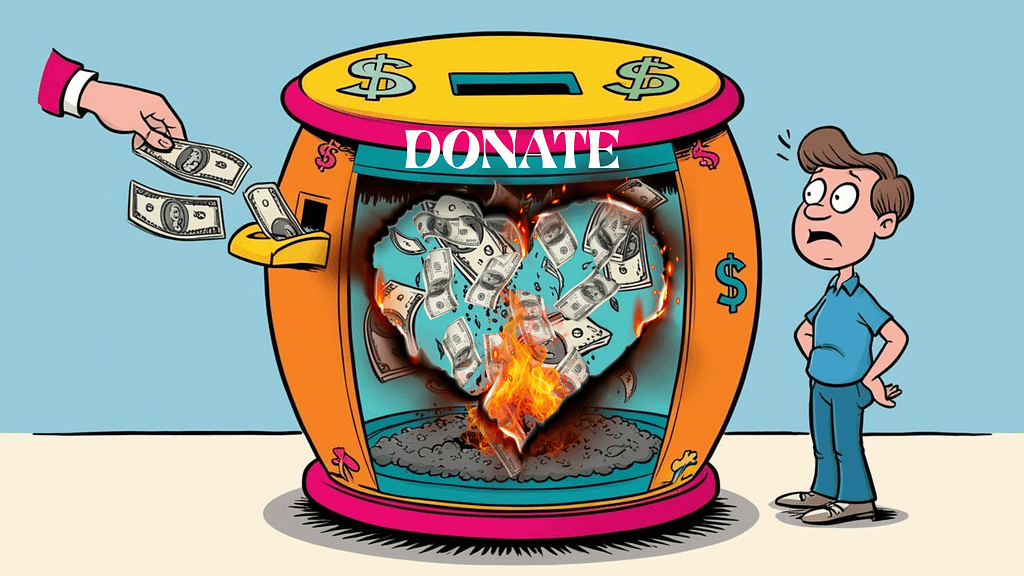The Truth About the F Word: When Giving Burns

When Giving Burns
The truth is, there are many different F Words, but the one I want to shine a light on today is fraud, specifically, charitable donation fraud. In times of crisis, compassion often moves people to open their wallets and support those in need. Sadly, that very kindness becomes a target.
Scammers are quick to seize the opportunity, impersonating legitimate charities or even victims themselves. They exploit tragedies to trick generous individuals into giving money that ultimately ends up in the hands of fraudsters.
In fact, according to the FBI, over 4,500 complaints were filed in 2024 alone, resulting in nearly $96 million in reported losses. These criminals use increasingly sophisticated tactics: from fake websites and crowdfunding pages to AI-generated content designed to evoke trust. Many request untraceable payments like crypto, vanishing before anyone realizes they were never real.
Because of this, staying aware is more important than ever. Before donating, take a moment to verify organizations, look into the people behind the campaigns, and be cautious with urgent or emotionally charged appeals.
By being vigilant, you protect not just your money, but the very spirit of generosity these fraudsters aim to exploit. This isn’t just theft, it’s weaponized empathy. But when you know what to look for, you can stop it in its tracks.
🚨 The Growing Epidemic: Scams in Disasters
When tragedy strikes, wildfires, terrorist attacks, hurricanes, so do the scammers. They know our hearts are wide open. They create fake relief organizations, pose as victims, and build entire campaigns designed to exploit grief.
📊 The FBI reports:
- $96 million lost to fraudulent charities in 2024
- More than 1 in 5 charity scams follow natural disasters
- Victims range from individuals to businesses trying to do the right thing
🧠 The Scammer’s Playbook
👥 Impersonation & Emotional Pull
Scammers might pose as:
- Well-known charities
- Victims in need
- Celebrities or influencers raising funds
⏰ Urgency Pressure
Phrases like “act now,” “time is running out,” or “we need immediate help” are designed to bypass your logic and tap straight into your heart.
🤖 AI-Enhanced Deception
Fraudsters now use AI to generate realistic photos, videos, and emotionally charged content, making their fake campaigns more convincing than ever.
⚠️ How to Spot Fake Charities
🔍 Do Your Research
Before donating, confirm the organization is real and registered. You can verify a charity’s tax-exempt status using the official IRS Tax Exempt Organization Search.
Also, check:
- Charity Navigator
- GuideStar
- Your state’s charity regulator or attorney general’s website
🛑 Red Flags
- Only accepting crypto or gift cards
- Urging secrecy or ultra-quick action
- Poor grammar, vague mission, no transparency
🛡️ Protecting Your Generosity
🎯 Smart Donation Strategies
- Pause before you pay, especially during high-emotion moments
- Use secure, traceable payment methods
- Stick to charities you know or thoroughly vet new ones
🧵 Validate Crowdfunding
- Is there a real connection to the beneficiary?
- Are the images or stories reverse-searchable?
- Does the campaign clearly state how funds will be used?
🧠 Set a Giving Standard
Establish your own rules: vet every campaign, sleep on it if unsure, and never donate out of guilt.
📣 Take Action: Reporting Fraud
🚔 If you suspect fraud:
- Save all communication & screenshots
- Visit IC3.gov to file a complaint
- Report suspicious campaigns to the crowdfunding platform
- Report fake charities to the FTC
🔄 Reporting helps protect others, not just yourself. Fraudsters fear the spotlight—shining it on them is your power.
💬 Frequently Asked Questions
❓ How do scammers trick people so easily?
They weaponize emotion, posing as victims, pulling heartstrings, and rushing decisions.
❓ What’s the safest way to donate during disasters?
Stick with verified nonprofits or local relief agencies. Avoid crypto, wire transfers, or requests for gift cards.
❓ Can AI really make scams look real?
Yes, AI-generated videos, voice cloning, and fake images are now used to build fake stories that feel authentic.
📢 Official Advisory
The FBI’s Internet Crime Complaint Center (IC3) issued a Public Service Announcement on January 16, 2025, warning of an increase in charitable donation fraud following mass casualty and disaster events. The PSA includes tips, trends, and reporting guidance to help protect the public from fraudulent fundraising.
If you or someone you know has been burned by charity fraud, don’t stay silent.
📩 Share your story at tips@thetruthaboutthefword.com to help others stay informed.
0 Comments